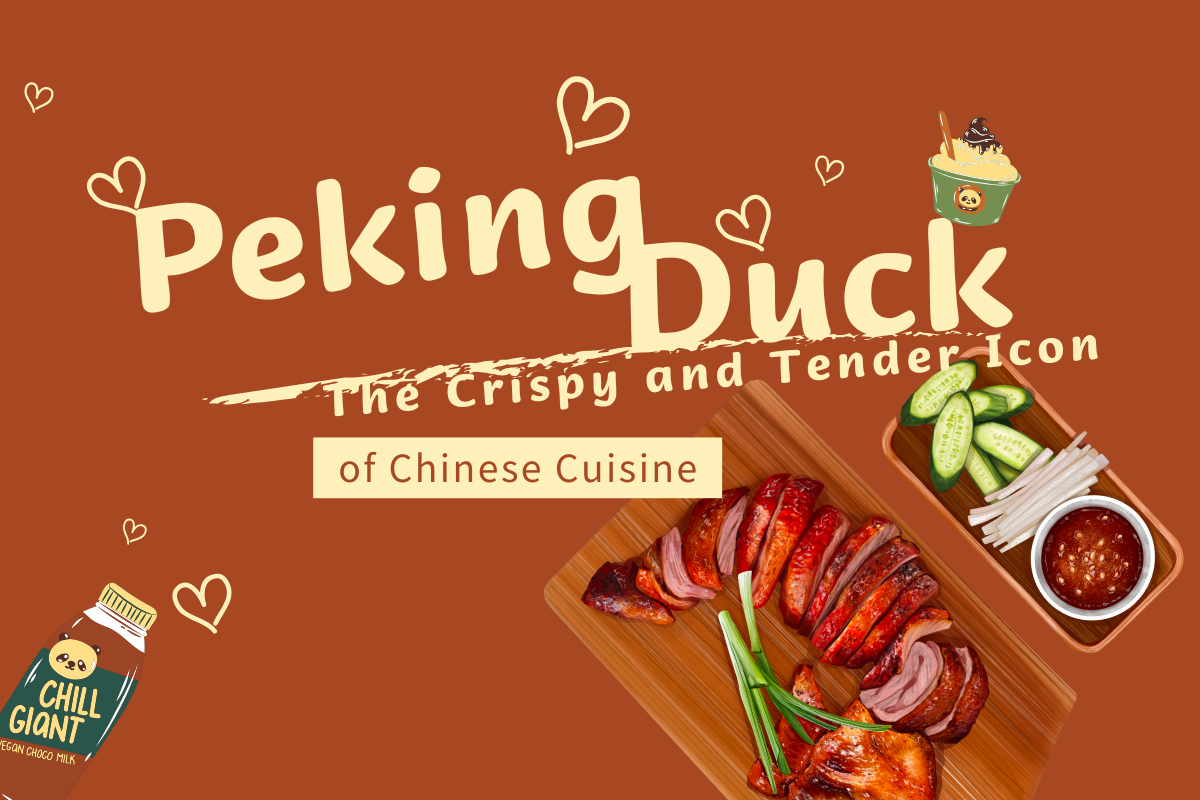Peking Duck: The Crispy and Tender Icon of Chinese Cuisine
Peking Duck is among China’s most internationally renowned imperial dishes, famed for its crispy skin, succulent meat, and unique eating style.
Origin Legends
Three main stories: Beijing locals believe White Duck was hunted by Jurchen people during the Jin dynasty and improved by palace chefs to create the initial roast duck; Hangzhou says "Roasted Duck" from Southern Song's Lin'an was brought to Beijing post-Yuan conquest; Nanjing claims Ming founder Zhu Yuanzhang's imperial cook created a roasted duck method in Nanjing, later passed on to Beijing by Ming Dynasty's Zhu Di.
Evolutionary Journey
During the Jin and Yuan dynasties, known as "Roasted Duck" or "Baked Duck," mostly cooked with a spit roast method. By the Ming era, roast ducks were served in Nanjing's imperial palace, later brought to Beijing and gradually into households. In the Qing Dynasty, Peking Duck became a favorite among royalty, solidifying its renown. In 1864, the opening of "Quanjude" Duck Restaurant further propelled the craft’s development.

Craftsmanship
Ingredients: Selecting plump and tender Beijing ducks with distinct fat layers and thick skin for the perfect balance of flavors.
Processing steps include slaughtering, scalding, plucking, inflating, gutting, cleaning, bracing, washing, hanging, drying, scalding, sugaring, etc., ensuring preparation for subsequent roasting.
Roasting methods: Utilizing either a closed oven or hanging oven for cooking. The closed oven method, exemplified by Defachang, involves slowly roasting in a closed chamber without direct flame; the hanging oven method, as represented by Quanjude, roasts over an open fire using fruit woods like jujube and pear to evenly color and cook the duck.
The example sentenses about Peking Duck
- 北京烤鸭外酥里嫩。
Běi jīng kǎo yā wài sū lǐ nèn.
Peking Duck is crispy outside and tender inside. - 请给我一份烤鸭,要带饼和酱。
Qǐng gěi wǒ yī fèn kǎo yā, yào dài bǐng hé jiàng.
I’d like a serving of Peking Duck with pancakes and sauce.
Distinct Flavors
Crispy Skin, Tender Meat: The duck skin turns golden-brown with a delicious crunch, while the meat remains delicate, neither greasy nor dry.
Rich Aromas: Hanging oven Peking Duck carries the fragrant essence of fruit woods, while closed oven roast has a unique, aromatic flavor. Pairing with sweet bean sauce and scallion strips enhances the experience.
Ceremonial Eating Ritual
Traditional steps:
- Begin by enjoying the crispy skin dipped in white sugar.
- Roll the succulent meat in pancakes with sauce for a balanced taste.
- Lastly, savor the duck bone soup, ensuring no part goes to waste.
Practical Ordering Phrases
- 烤鸭可以片薄一点吗?
Kǎo yā kě yǐ piàn báo yī diǎn ma?
Can the duck be sliced thinner? - 鸭架做汤还是椒盐?
Yā jià zuò tāng hái shì jiāo yán?
Do you want the bones as soup or fried with spices? - 甜面酱不够,再加一点。
Tián miàn jiàng bú gòu, zài jiā yī diǎn.
More sweet bean sauce, please.
Peking Duck's fame has spread far and wide, and today we've delved into the making, flavors, dining etiquette, and even provided some useful phrases for enjoying this iconic Chinese dish. If it has piqued your curiosity, why not give it a try?